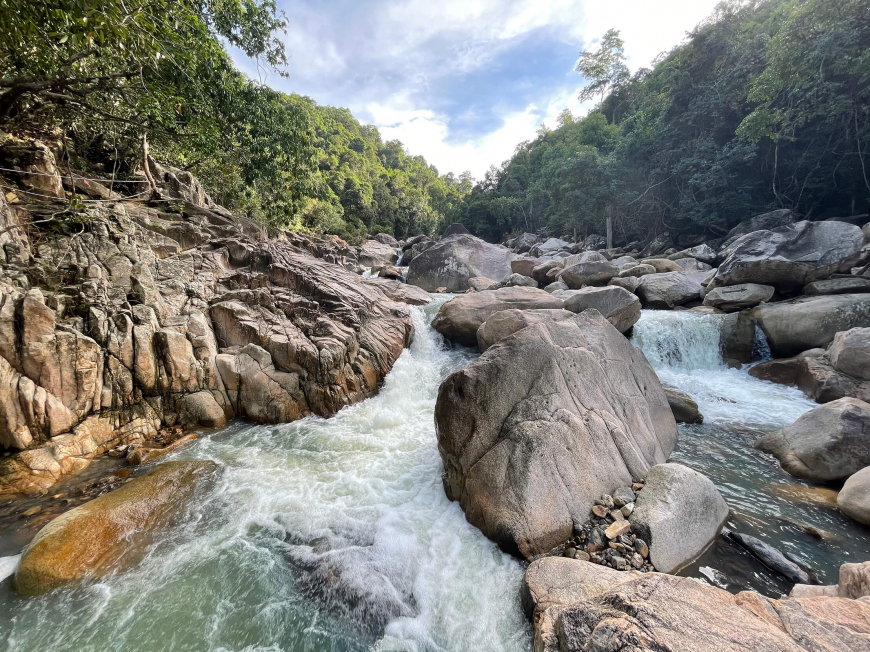Nha Trang is a glittering city with clean beaches and blue water. The bright lights of skyscrapers tower up from the beachside, picturesque from almost any angle. Social media-savvy travelers can get fantastic posts just along the shoreline.
It’s possible to visit Nha Trang and shoot ground-floor selfies from the sand, but there are quite a few destinations that many travelers miss. In fact, Nha Trang is rich with culture and history, vibrant nature and unmissable secrets that bring the city to life for those who seek them out.
Anyone can get a snap from the beach. Head to these 5 unique destinations to upgrade your Instagram game to the next level.
1. Skylight Rooftop Bar
The Skylight Rooftop Bar is one of the most popular spots in Nha Trang for locals, travelers, and Instagram influencers alike. A true beach bar, Skylight sits right on the edge of Tran Phu Beach, serving up specialty cocktails made by bartenders who were trained by staff from Los Angeles’ own Lock & Key bar.
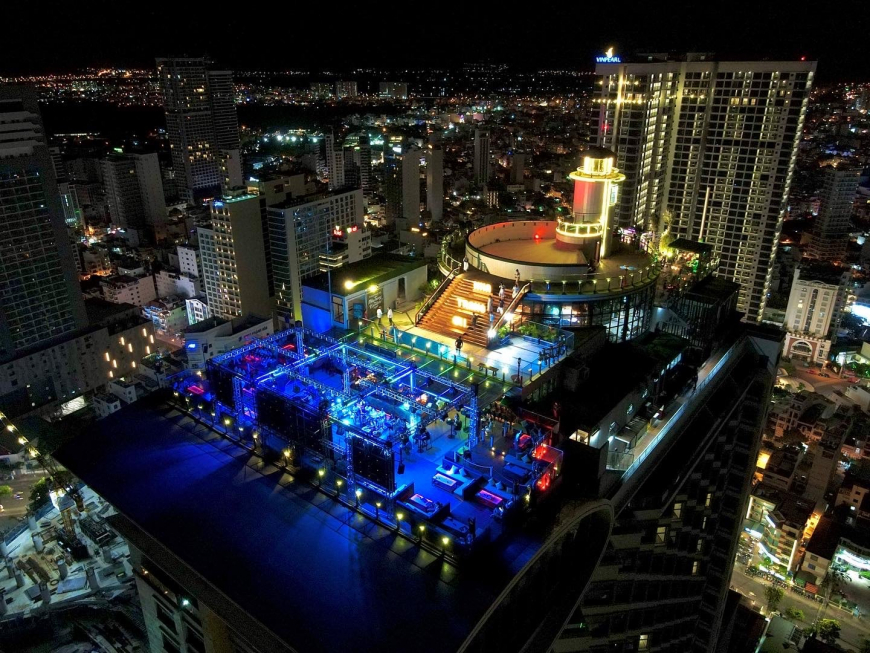
Source: Internet
The space is enormous. There are three bars, four event spaces, and 3 DJ tables, in addition to the pool deck, the observatory, the lighthouse, and the glass-floored skywalk. The venue hosts regular live music events, but it’s also a great place to bring a date. It’s a “choose your own adventure” kind of bar, fun for couples and party goers alike.
Skylight’s biggest claim to fame is its lighthouse, which is the tallest in the entire world at 151 meters. It’s visible from everywhere in the city, and everywhere in the city is visible from its peak. For even better views, head to the Skydeck. Though the lighthouse is taller, the Skydeck is equipped with powerful binoculars to get up close and personal with the distance. During the daytime, there is no better place to get views of the East Sea and the surrounding mountains. At night, Nha Trang transforms into a dazzling light show, shimmering like urban phosphorescent plankton.
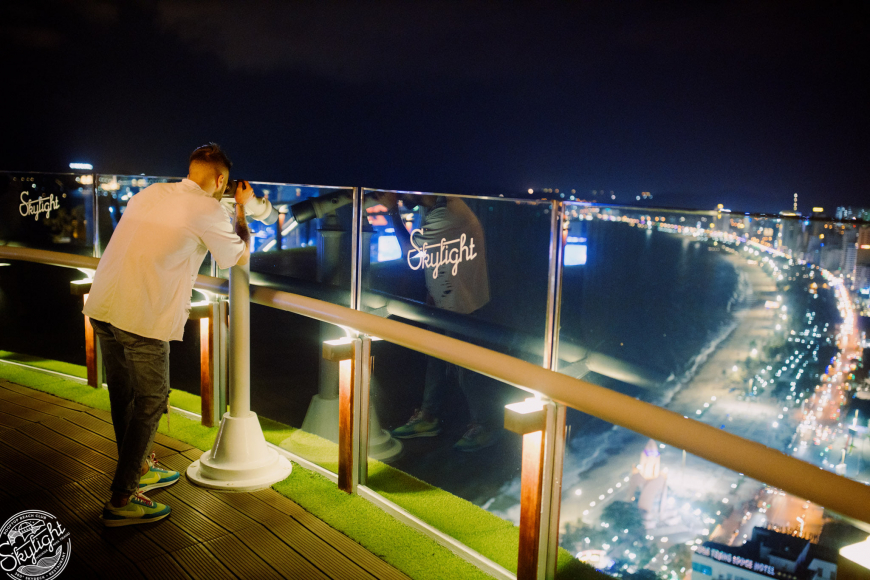
Source: Internet
2. Thap Ba Hot Springs
Skylight Bar is the spot for posh photo ops, but Thap Ba hot springs and mud baths are for travelers that want to sink into the nitty-gritty of nature. At a surface level, mud baths may seem to be antithetical to aesthetics. In reality, mud baths are world-renowned as a beauty secret. Mud baths exfoliate dead skin, relieve joint pain, relax muscles and joints, and have been proven to aid skin conditions like eczema and psoriasis.
Opened in 1999, Thap Ba is now a one-stop shop for natural therapy. A range of services is available, including a communal or private mud bath, a mineral waterfall, a swimming pool, and a hydrotherapy wall. The top-tier package includes a jacuzzi, four swimming pools, a sauna, and a restaurant.
Soak in the pool of viscous mineral mud for at least twenty minutes to experience its full benefits. The longer the exposure the better – it’s a slow process to allow fatigue to release from the pores as muscles relax. After the mud bath, rinse off and then sink into a hot mineral water bath. The combination of the two treatments can leave visitors feeling lightheaded with relief, so be sure to hydrate throughout the experience. Shower off at the end to rinse away the stress with the dirt before heading back into the city for a drink – perhaps at Skylight?
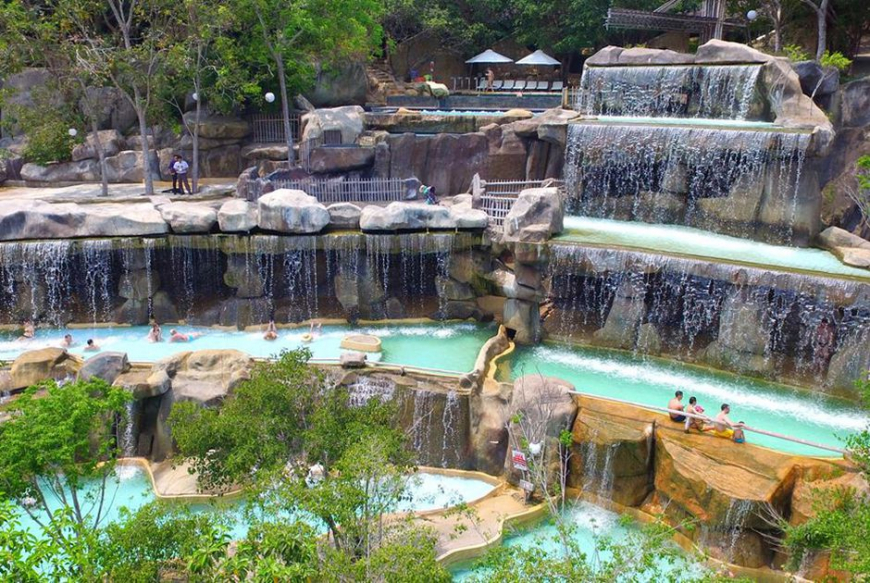
Source: Internet
3. Ponagar Tower
Though Nha Trang is most famous for its laid-back beach, party vibes, and seafood, it is also a city rich with history and cultural heritage. Nha Trang was part of the Champa Kingdom long before it was a Vietnamese city. Now the relics of that powerful Hindu empire remain encapsulated in ruins.
Ponagar Tower is one of the most important architectural relics of the Cham people, and it is considered a national historical relic by the Ministry of Culture, Sports, and Tourism. The tower was once separated into three floors. The first contained a guard tower, the second was a guest house, and the third was a place of religion and ceremony. The entire structure is covered in inscriptions praising the Mother Goddess, offering her the tower and its land as a tribute.
The top floor of Ponagar Tower contains four brick pillars built without mortar. Decorative patterns adorn the top of the pillars, which themselves are carved into statues of gods, goddesses, fairies, and animals. The central tower is 23 meters high, a towering goddess statue carved out of black granite. She leans against a lotus flower, while figures of Lord Shiva and animals cavort overhead, carved into the top of the pillar. The three smaller pillars are devoted to Shiva, Sanhaka, and Ganesha.
Though Ponagar Tower and the Champa Kingdom ruins are postcards from a long-gone past, the Cham people are still a significant ethnic minority in Vietnam, especially in the central region. To this day, the people of the Central Highlands offer praise to these same goddesses who are said to have come to Earth to teach people to grow rice and weave cloth – trades and skills still practiced, shared, and honored today.
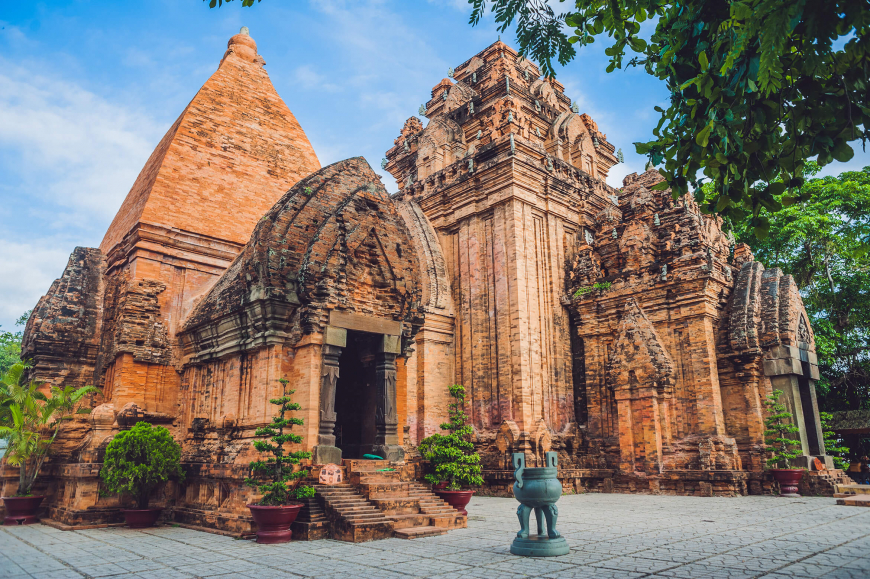
4. Vinpearl Cable Car
Hon Tre, or Bamboo Island, sits on the south end of Nha Trang Gulf. In the last ten years, it’s been transformed into Vinpearl Land, a posh development featuring luxury resorts, a golf course, an amusement park, a water park, and an aquarium. Vinpearl Land – sometimes called Vinpearl Island – is connected to Nha Trang with the world’s longest sea-crossing cable car.
Travel 3.3 kilometers across the ocean, suspended 100 meters in the air across nine latticed pillars. During the day, the ocean glitters under the sun. The trip offers panoramic views of an ever-extending ocean framed by towering mountains in the distance. At night, the pillars are lit up with neon, and Nha Trang City glows in the growing distance like the sister of the starry night sky itself.
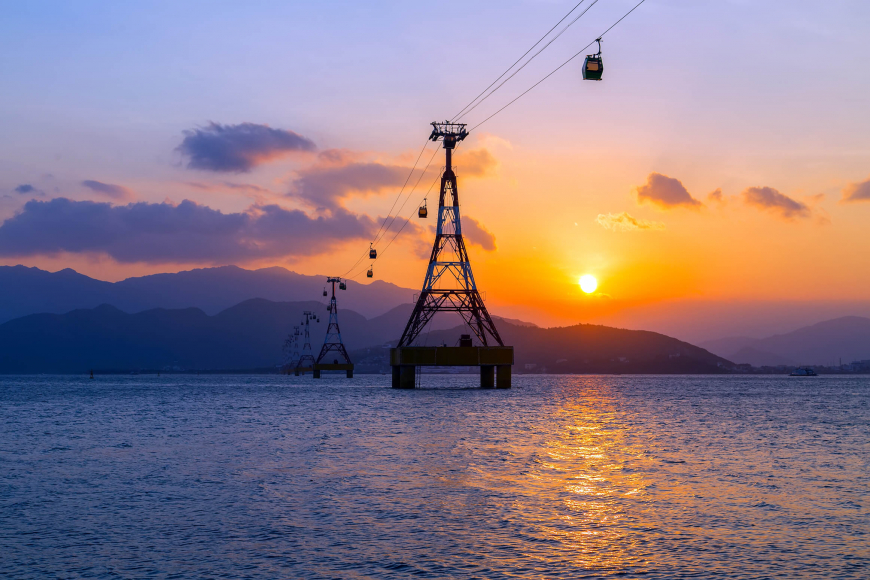
5. Ba Ho Waterfall
About thirty minutes from Nha Trang, Ba Ho Stream plunges 660 meters from the top of Hon Son in the Khanh Hoa mountain range. The stream cascades down a system of large and small pools to form three large lakes at different heights along the mountainside. As it passes down the mountain range, it feeds a forest teeming with life, an ancient ecosystem that still thrives among the trees. Trek through this forest to visit the lake system by way of a hiking trail that increases steadily in difficulty.
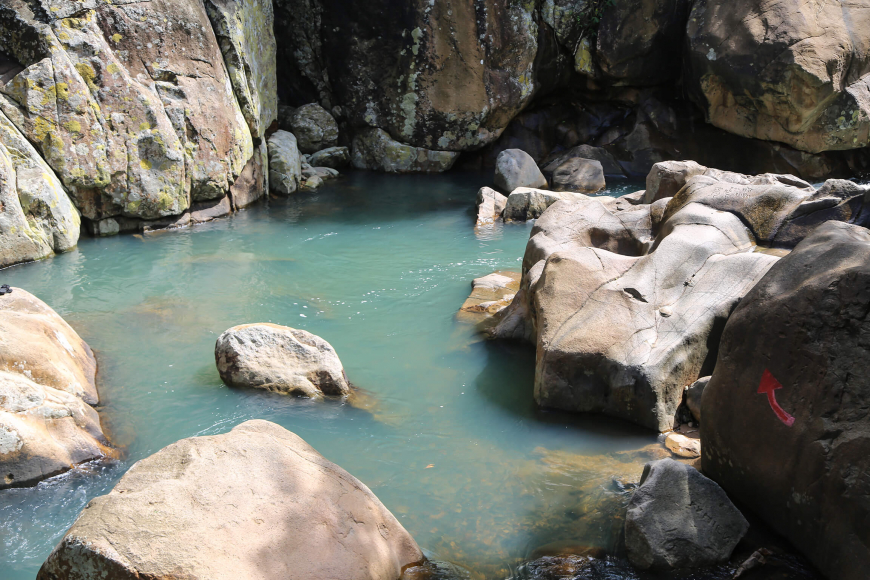
The lowest lake is the most easily accessible. Though this is the last stop of the Ba Ho Waterfall’s course, local knowledge insists that this waterfall is actually the most beautiful of the three during the rainy season, when monsoon storms supercharge the water flow. Cliff jumping is possible here: clamber to the top of this tier of the waterfall and plunge back down into the cool water – it’s clearest here at the bottom.
Follow the stream along the trail farther up the mountain to reach the second lake, which is thoroughly enclosed by forest. The terrain here is much more challenging than the lower level, which attracts explorers and nature lovers, but not large crowds. Hunker down under one of the enormous trees that provides shade this lake to stop for lunch and a swim.
The final lake is the most challenging hike. Clamber over rugged, rocky terrain through the forest to reach the waterfall’s highest pool. The surrounding area is full of old growth trees and a cave system that threads through the mountainside. Explorers who reach this point will be rewarded by true solitude and a landscape beautiful enough to transform every traveler into a photographer.
